Your Trusted Custom Neoprene Boat Seat Covers Products Manufacturer
We make it easy for you to build your brand by providing a one-stop solution to your OEM/ODM custom production.
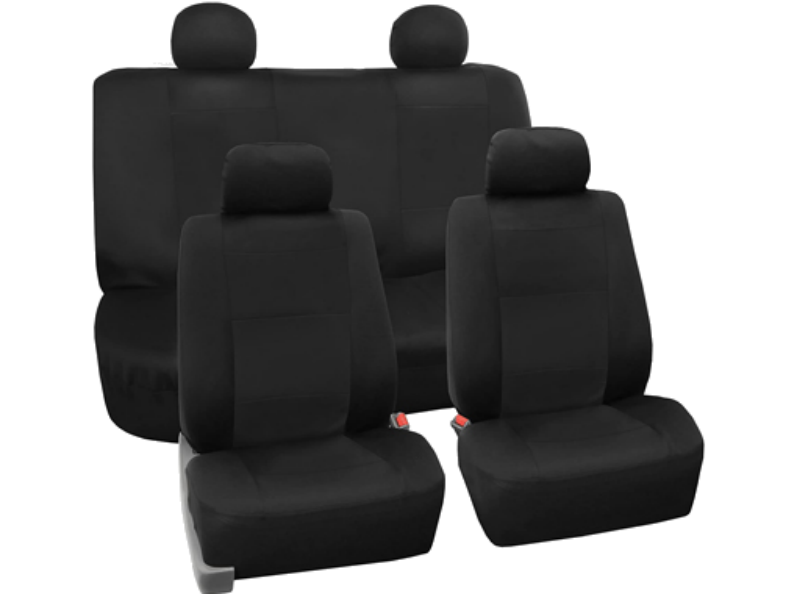
We ensure that every custom neoprene boat seat covers with high quality will stand out.
Neoprene boat seat covers customization in various types,colors,pattern ,logo,and others design is what Oneier Company does best.
We offer OEM neoprene boat seat covers products in a broad range of types, artwork, packaging and other accessories.
Also, we have a strong fabric supply chain to provide the widest range of fabric customized services for your neoprene boat seat covers.
Our product has received 100% repurchase from our partners,Strict quality control reflected in product details.
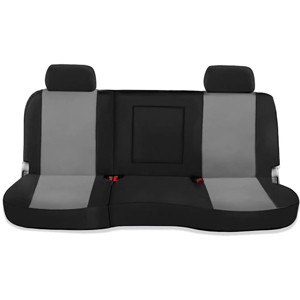
Detail One
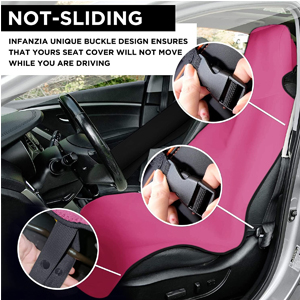
Detail Two
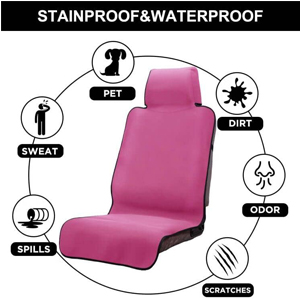
Detail Three
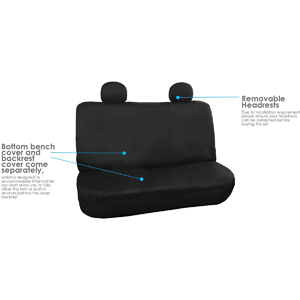
Detail Four
You just choose any types you prefer for your custom neoprene boat seat covers, and we will take care of the rest.
As a custom neoprene products manufacturer, Oneier has a team of 20+years experienced engineers, designers, sales consultants, and production team who have been engaged in the research and development of different neoprene products. We also have the ability and equipment to conduct advanced testing, production, and packaging. After all, our goal is to make your ideas into a reality.
The benefits And Value We can Bring To You
Custom
Sample making 1-3 day
Delivery
Fast delivery in 1-10 days helps you to take more share of the market
Quality
No complaints, no minor hassles for your customers, which will make your sales worry-free
Cost
Fully automatic equipment manufacturing process for each customer to save production costs and make it more competitive
Support
Put forward your ideas, we design to production completion, for you to save more intermediate costs
Certification
Qualified by BSCI ,Disney ,ISO9001,SGS
You can totally trust us with all certifications shown below
Certification Guarantee

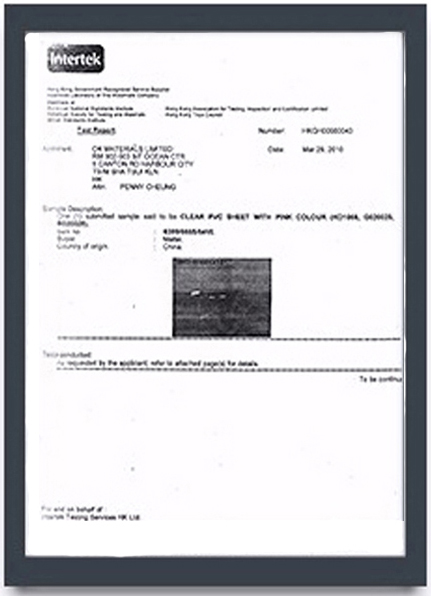
International standardized certification and recognition, so that our workflow, product quality, and management level maintain a high degree of worldwide consistency, ensuring the safe use of each customer.
After obtaining the certificate, enterprises are able to improve product quality by implementing standards, improving and perfecting management, so that each pipe household is satisfied.
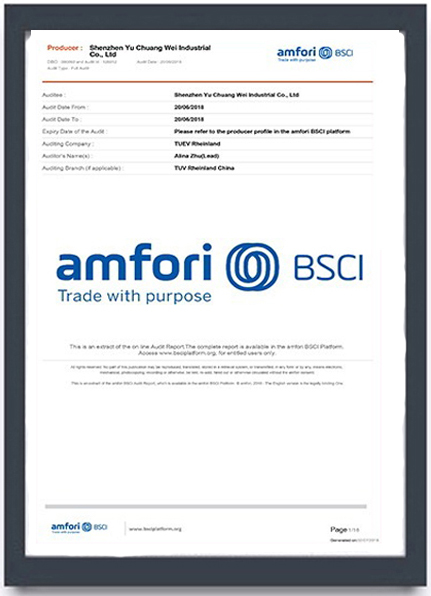
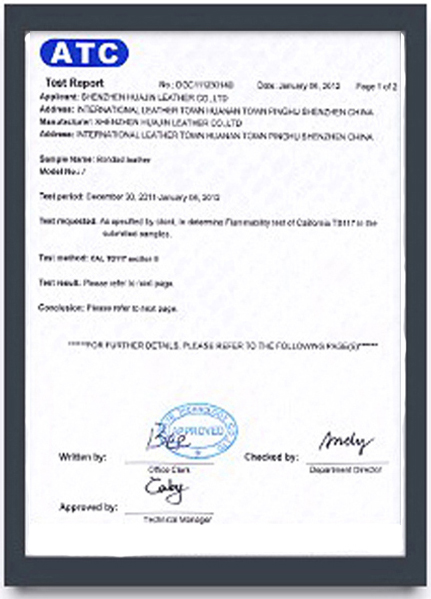
Official certification by third parties, so that products and services are secure and standardized, and every item delivered to the customer is guaranteed.
Hey, don't hesitate to try & feel the FREE SAMPLES before making up your decision
Cooperating Brand Partners Trusted
Your product is produced in reliable factory like our already cooperating international brand partners below:

Effective Production Process of Your Neoprene Products OEM
We believe quality is always the key to success, which includes a responsible approach to manufacturing, and controlling whole process.

1-Business Contact
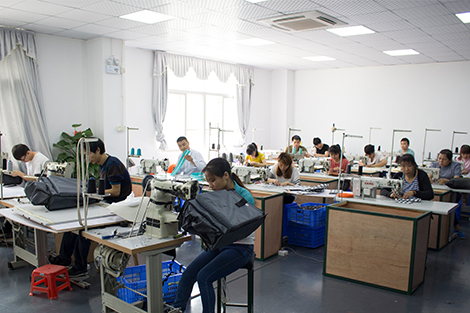
2-Sample Creation

3-Material Preparing

4-Material Cutting

5-Bulk Production

6-Quality Inspection

7-Product Packaging

8-Cargo Warehousing
What did our happy clients say?
Andrew Jackson
22nd Oct,2021 America
Due to policy reasons, my team and I have analyzed and developed the sales of neoprene koozie. The sales volume increased by 200% last month. It was beyond my expectation. The store staff told me that our this neoprene sleeves always attract the attention of customers. many old customers introduce their friends to come and purchase because of the good quality of our products.It’s true. Awesome, this works better than any other way of advertising. Thank you for providing us with the neoprene can cooler.


Carl Parein
13th Dec,2019 France
Because of the needs of the company’s project development, I selected many suppliers of neoprene koozie for comparative analysis. I was very lucky to find you on Google. I was surprised by the professionalism of your team. From the sharing of product expertise, the introduction of production technology, and the whole service of order production and delivery, the whole project has been well connected. Our products are sold well in the local market. Thank you very much, We will try to maintain cooperation with you all the time
Daniel Garcia
25th May,2010 Australia
I have chosen neoprene koozie as a new project for the company. In the early stages, I analyzed many Chinese suppliers, but only you mentioned,welcome me to visit your factory at any time. I will not hesitate to schedule and purchase a flight to your company’s factory to learn about your company’s products, production processes, and other information. Your reception service is very meticulous,That’s great. Your factory’s professionalism and service have given me confidence in managing my neoprene can coolers project well. thanks

More Things about Neoprene Boat Seat Covers
Are Neoprene Seat Covers Worth It?
The worthiness of neoprene seat covers can be assessed from multiple angles, primarily focusing on their durability, comfort, and versatility.
- Durability and Protection: Neoprene is a synthetic rubber known for its exceptional resistance to water, UV rays, and stains, making it an ideal material for seat covers, especially in vehicles frequently exposed to outdoor elements. This resilience not only ensures a longer lifespan for the seat covers but also provides prolonged protection for your car’s upholstery.
- Comfort and Insulation: One of the significant advantages of neoprene is its ability to maintain a comfortable temperature. Unlike other materials that may get too hot in summer or too cold in winter, neoprene’s thermal insulation properties help in maintaining a more consistent temperature, contributing to enhanced comfort during drives. Moreover, neoprene’s breathable nature allows for better air circulation, preventing issues like sweating or discomfort during long journeys.
- Versatility and Aesthetics: Neoprene seat covers come in various colors and designs, offering customization options to match your car’s interior or personal style. This versatility, combined with the material’s snug fit and smooth texture, can significantly enhance the aesthetic appeal of your vehicle’s interior.
- Practical Use and Maintenance: Commonly used in products like wetsuits, lunch bags, and even protective gear due to its insulating and protective properties, neoprene in car seat covers serves a similar purpose. It’s easy to clean and maintain, making it a practical choice for families, pet owners, or those who often engage in outdoor activities.
- Cost-Effectiveness: While neoprene seat covers might have a higher upfront cost compared to other materials, their longevity and the level of protection they offer make them a cost-effective investment in the long run.
In conclusion, neoprene seat covers are a worthwhile investment for those seeking durable, comfortable, and practical protection for their vehicle’s seats. Their blend of protective qualities, ease of maintenance, and aesthetic appeal makes them a superior choice in automotive seat covers.
What Are The Benefits of Neoprene Boat Seat Cover Products?
Neoprene, a synthetic rubber, is particularly well-suited for marine environments due to its unique properties. Here are the key advantages of neoprene boat seat covers:
- Water Resistance: Neoprene is inherently water-resistant, making it an ideal material for boat seat covers. It protects the seats from splashes, spills, and general moisture, which is common in marine environments.
- Durability: Neoprene is known for its durability and resistance to wear and tear. This is crucial for boat seat covers, which are exposed to various elements and frequent use. Neoprene covers can withstand UV rays, saltwater, and other harsh marine conditions without degrading quickly.
- Comfort and Cushioning: Neoprene provides a comfortable, cushioned surface, enhancing the comfort of boat seats. This is particularly beneficial during long periods of sitting while boating.
- Mold and Mildew Resistance: The material’s resistance to mold and mildew is essential for boat seat covers, as these fungal growths are common in moist, marine environments. Neoprene helps keep the seats clean and hygienic.
- Easy to Clean: Neoprene covers are easy to clean and maintain. They can be wiped down or washed without the risk of damaging the material, ensuring the boat seats remain in good condition.
- Aesthetic Appeal: Neoprene can be dyed in various colors and patterns, allowing for customization and aesthetic enhancement of the boat’s interior.
- Thermal Insulation: Neoprene has good insulating properties, which can be beneficial in maintaining a comfortable seat temperature in various weather conditions.
- UV Resistance: Exposure to sunlight is a significant concern in marine settings. Neoprene offers UV resistance, helping to prevent the fading and weakening of the boat seats.
- Flexibility: Neoprene’s flexibility makes it easy to fit over various seat shapes and sizes, ensuring a snug and secure fit.
- Eco-Friendly Options: With growing environmental awareness, there are neoprene covers available that are made from eco-friendly or recycled neoprene, catering to environmentally conscious boaters.
These advantages make neoprene an excellent choice for boat seat covers, offering a combination of protection, durability, comfort, and aesthetic appeal, all of which are important factors in the marine setting.
Is Neoprene Better Than Leather?
When comparing neoprene and leather for car seat covers, the decision largely depends on the specific requirements and conditions of use. Here’s a detailed analysis:
- Weather and Heat Resistance: Neoprene, a type of synthetic rubber, is known for its resistance to weather elements, especially water. This makes it a superior choice for individuals who often find themselves wet due to activities like swimming or getting caught in the rain. Unlike leather, neoprene does not absorb water, preventing potential damage and discomfort. Additionally, neoprene is less sensitive to sun and heat. Leather, on the other hand, can get uncomfortably hot under direct sunlight, which can be a significant issue in warmer climates.
- Durability and Maintenance: Neoprene is renowned for its durability. It’s less prone to cracking or fading compared to leather when exposed to sunlight over time. This material is also easier to clean and maintain, which is particularly beneficial for those leading active, outdoor lifestyles or with children and pets. Leather, while durable, requires more careful maintenance to retain its appearance and can show signs of wear more noticeably over time.
- Comfort and Insulation: Neoprene offers a consistent level of comfort in various temperatures. It doesn’t get too hot or too cold, which enhances comfort, especially in extreme weather conditions. Leather, while offering a luxurious feel, can become quite hot in summer and cold in winter, affecting the comfort of the occupants.
- Aesthetics and Luxury Appeal: Leather has a classic, premium aesthetic that many car owners appreciate. It adds a touch of luxury and sophistication to a vehicle’s interior. Neoprene, while functional, doesn’t quite match the luxurious appeal of leather but offers more versatility in terms of colors and patterns.
- Cost-Effectiveness: Generally, neoprene seat covers are more affordable than high-quality leather covers. This cost difference, coupled with neoprene’s durability and low maintenance, makes it a more cost-effective choice in the long run.
In summary, while leather has a premium aesthetic and feel, neoprene excels in durability, maintenance, and comfort, especially under varying weather conditions. For car owners prioritizing practicality and a more active lifestyle, neoprene may be the better choice. However, for those valuing luxury and traditional elegance, leather remains a classic option.
Are Neoprene Seat Covers Hot To Sit On?
The comfort level of neoprene seat covers, particularly in terms of heat absorption and breathability, is a common concern for many users. Here’s a more scientific and detailed perspective:
- Heat Absorption and Insulation: Neoprene is a type of synthetic rubber that is engineered for thermal insulation. This means it is designed to resist the absorption of heat to a significant extent. When compared to materials like leather or vinyl, neoprene is less likely to become uncomfortably hot when exposed to sunlight.
- Breathability: A key feature of neoprene seat covers is their breathability. This quality allows air to circulate through the material, which helps in reducing the buildup of heat. It’s this characteristic that makes neoprene covers more comfortable in warm conditions, as they prevent excessive sweating and stickiness that can occur with less breathable materials.
- UV Resistance: Many neoprene seat covers come with UV-resistant properties. This resistance to ultraviolet rays not only protects the covers from sun damage but also reduces their tendency to heat up in direct sunlight. This UV protection is a crucial factor in ensuring that the covers do not become overly hot.
- Comparison to Factory Seats: When compared to standard factory cloth seats, neoprene covers do not get significantly hotter. This is because cloth seats and neoprene have somewhat similar properties in terms of heat absorption and breathability. Therefore, in terms of temperature, sitting on neoprene covers in a car left in the sun should be comparable to sitting on cloth seats.
- Personal Comfort and Preferences: It’s important to note that the perception of comfort can be subjective. While neoprene is designed to be comfortable and heat-resistant, individual preferences and sensitivities may vary. Some people might find neoprene to be slightly warmer than cloth but still within a comfortable range.
In summary, neoprene seat covers are engineered to be comfortable and heat-resistant, making them a suitable choice for various climates. Their breathability, coupled with heat and UV resistance, ensures that they do not become excessively hot, providing a pleasant seating experience in most conditions.
How Long Do Neoprene Seat Covers Last?
The durability of neoprene seat covers is influenced by several factors including material quality, exposure to environmental conditions, and maintenance practices. Here’s a more detailed breakdown:
- Material Quality: The lifespan of neoprene seat covers largely depends on the quality of the material used. Standard neoprene covers, without any special treatments, usually last about one to two years under regular use. However, high-grade neoprene, often used by reputable manufacturers, comes with enhanced durability features like UV resistance and reinforced stitching, which can significantly prolong their life.
- UV and Environmental Exposure: Neoprene’s resistance to sunlight is a crucial factor in determining its longevity. Basic neoprene can withstand around 100 hours of direct, intense sunlight before showing signs of fading or wear. In contrast, neoprene with added UV protection can endure over 1,000 hours of sunlight exposure. This makes a considerable difference, especially in regions with strong sunlight throughout the year. Regular exposure to elements like rain, snow, and extreme temperatures also affects the material’s lifespan.
- Maintenance and Care: Proper care plays a vital role in extending the life of neoprene seat covers. Regular cleaning, avoiding harsh chemicals, and minimizing prolonged exposure to intense sunlight and extreme weather conditions can prevent premature wear and tear. It’s also important to follow the manufacturer’s instructions for care and cleaning to maintain the material’s integrity.
- Usage Patterns: The frequency and nature of use also impact the durability of neoprene seat covers. Covers in vehicles that are used daily and exposed to various stressors like moisture, friction, and sunlight will generally have a shorter lifespan compared to those in less frequently used vehicles.
- Warranty and Manufacturer Guarantees: Many high-quality neoprene seat covers come with warranties or guarantees, reflecting the manufacturer’s confidence in their product’s durability. A longer warranty period often indicates a higher expected lifespan.
In summary, while standard neoprene seat covers can last around one to two years, those of higher quality with added protection features can last much longer, often exceeding 5 years. The key to maximizing their lifespan lies in choosing quality products, minimizing exposure to harsh conditions, and adhering to proper maintenance practices.
Custom Neoprene Boat Seat Cover Types
Here are some of the common types of neoprene boat seat covers and their distinct features:
- Standard Neoprene Seat Covers:
- Characteristics: These are designed to fit most standard boat seats. They typically offer basic protection against water, UV rays, and mild wear.
- Usage: Ideal for casual boaters who need simple, effective protection for their seats.
- Custom-Fit Neoprene Seat Covers:
- Characteristics: Tailored to fit specific boat seat models or sizes. They provide a snug fit, ensuring better protection and a sleek look.
- Usage: Suitable for boat owners who want a perfect fit and are willing to invest in custom-tailored protection.
- Heavy-Duty Neoprene Seat Covers:
- Characteristics: Made with thicker and more durable neoprene, these covers offer enhanced protection against harsh weather conditions, UV rays, and physical damage.
- Usage: Recommended for boats frequently used in challenging conditions or left exposed to the elements.
- Ventilated Neoprene Seat Covers:
- Characteristics: These covers come with built-in ventilation systems to prevent moisture buildup, which is crucial in preventing mold and mildew.
- Usage: Ideal for humid climates or boats that are stored for long periods.
- Convertible Neoprene Seat Covers:
- Characteristics: Designed with versatility in mind, these covers can be easily adjusted or partially removed to accommodate different seating configurations.
- Usage: Great for boats with versatile seating arrangements or for owners who frequently change seating layouts.
- Decorative Neoprene Seat Covers:
- Characteristics: Apart from protection, these covers focus on aesthetics, available in various colors and patterns to match the boat’s interior or owner’s personal style.
- Usage: For boat owners who prioritize the look of their boat along with protection.
- Eco-Friendly Neoprene Seat Covers:
- Characteristics: Made from eco-friendly or recycled neoprene, catering to environmentally conscious consumers.
- Usage: For boaters who are environmentally conscious and prefer sustainable products.
- All-Weather Neoprene Seat Covers:
- Characteristics: Designed to withstand a wide range of weather conditions, from intense sunlight to heavy rain.
- Usage: Suitable for boats used in varying climates and weather conditions.
Each type of neoprene boat seat cover offers unique benefits, from basic protection to advanced features like ventilation, custom fit, and aesthetic appeal. The choice depends on the boat owner’s specific needs, preferences, and the level of protection required for their boat seats.
Considerations When Buying Neoprene Boat Seat Covers
The following considerations are essential to ensure that you choose the right neoprene seat cover for your boat:
- Fit and Size:
- Ensure the covers fit your boat seats properly. Measure your seats and compare with the cover dimensions. Consider whether you need standard, universal covers or custom-fit options for a more precise fit.
- Quality of Neoprene:
- The durability and protection level of the cover largely depend on the quality of neoprene. Look for high-grade, dense neoprene for better resistance to water, UV rays, and wear.
- Thickness of the Material:
- Thicker neoprene provides better cushioning and protection but may be less flexible. Decide on the thickness based on the balance between protection and ease of use.
- UV Resistance:
- Since boat seats are often exposed to sunlight, ensure the neoprene covers are UV resistant to prevent fading and material degradation.
- Water Resistance:
- One of the primary functions of neoprene covers is to protect against water. Check the level of water resistance, especially if your boat is frequently used in wet conditions.
- Ease of Installation and Removal:
- Consider how easy it is to install and remove the covers. Quick and easy installation/removal is convenient for regular use.
- Maintenance and Cleaning:
- Look for neoprene covers that are easy to clean and maintain. Some covers can be wiped clean, while others might be machine washable.
- Aesthetic Appeal:
- Neoprene covers come in various colors and designs. Choose a style that complements your boat’s interior and your personal taste.
- Ventilation Features:
- In humid conditions, covers with ventilation can prevent moisture buildup, reducing the risk of mold and mildew.
- Cost and Budget:
- Consider your customers’ budget when selecting custom boat seat covers. Look for manufacturers that offer competitive prices and bulk discounts, so you can provide your customers with quality facial care at an affordable price. At Oneier,we offer high-quality boat seat cover including Various styles at an affordable price.
- Brand Reputation:
- Consider purchasing from reputable brands known for quality marine products. Customer reviews and ratings can provide valuable insights.
- Customization Options:
- If you want personalized covers, check if the manufacturer offers customization services like embroidery or specific color choices.
- Bulk Purchasing Options:
- Minimum Order Quantity: Understand the minimum number of units (MOQ 100)required to avail bulk pricing.
- Customization in Bulk: Ensure that customization options are still available when purchasing in bulk.
14. Quality Assurance:
- Make sure to purchase neoprene boat seat covers from a reputable manufacturer like Oneier that has stringent quality control measures in place. This ensures that the products you are selling meet safety and efficacy standards and will provide your customers with the best results possible.
By considering these factors, you can choose neoprene boat seat covers that meet your specific needs in terms of protection, durability, aesthetics, and budget. It’s important to balance practicality with personal preferences to get the most out of your investment.
What is The Process For Customizing Neoprene Boat Seat Covers
Customizing neoprene boat seat covers involves a series of steps that ensure the covers meet your specific needs in terms of fit, style, and functionality. Here’s an outline of the process:
- Measurement and Specification:
- Measure the Seats: Accurately measure the dimensions of your boat seats including width, depth, and height. Consider any unique shapes or contours.
- Determine Specifications: Decide on the thickness of the neoprene and any additional features like UV resistance, water resistance, or additional padding. Also, consider whether you need covers for seat backs, bottoms, or both.
- Design and Style Selection:
- Choose Colors and Patterns: Select from available colors and patterns that match your boat’s interior or personal preference.
- Add Custom Graphics or Logos: If you want custom graphics, logos, or text, specify these elements, including their size and placement.
- Material Choice:
- Select Neoprene Quality: Choose the quality of neoprene. Higher-grade neoprene offers better durability and resistance to elements.
- Consider Additional Lining: Decide if you need additional lining materials for comfort or protection, like a fleece lining for added comfort.
- Manufacturing Process:
- Cutting Neoprene: Based on your measurements and design, the neoprene is cut to size.
- Sewing and Assembling: The cut pieces are sewn together, ensuring a snug fit. Reinforced stitching might be used for added durability.
- Adding Fastenings or Straps: Fastenings, zippers, or straps are added as required for secure fitting and easy removal.
- Quality Check and Adjustments:
- Inspection: The completed covers are inspected for quality, ensuring they meet the design specifications and are free from defects.
- Fit Testing: If possible, test the covers on your boat seats to ensure a proper fit. Make any necessary adjustments.
- Installation and Use:
- Install the Covers: Fit the covers onto your boat seats, ensuring they are snug and secure.
- Maintenance Guidance: Receive instructions on how to care for and maintain your neoprene seat covers to prolong their lifespan.
- Feedback and After-Sales Service:
- Provide Feedback: After using the covers, provide feedback to the manufacturer. This can help with any future customization or improvements.
- After-Sales Support: Ensure you have access to after-sales support for any future queries or additional customization needs.
Remember, the key to successful customization is clear communication with the manufacturer or service provider, ensuring that all your requirements are well understood and accurately implemented.
Is Neoprene FDA Approved?
Neoprene, a synthetic rubber, can achieve FDA approval when it is manufactured using ingredients that meet the specific standards and regulations set by the U.S. Food and Drug Administration (FDA). This ensures that the material is safe for applications that involve direct or indirect contact with food.
Compliance with FDA Guidelines: For neoprene to be FDA approved, it must be produced from ingredients that are on the FDA’s list of approved substances. This is crucial as it ensures that the material does not contain any components that could be harmful when in contact with food or beverages.
Color and Appearance: FDA-approved neoprene is generally available in an off-white color. The color is a distinguishing feature that helps in identifying FDA-compliant materials, ensuring that they are easily distinguishable from non-compliant materials.
Intended Use: FDA-approved neoprene is specifically designed for repeated food exposure. This makes it a safe and reliable choice for applications in the food processing industry, where materials are constantly in contact with different food products.
Oil Resistance: One of the key characteristics of FDA-approved neoprene is its excellent resistance to oils. This property is particularly important in food processing and industrial applications where exposure to oils and fats is common. The material’s ability to resist these substances ensures that it maintains its integrity and does not degrade over time, even under constant exposure.
Preference in Food Processing and Industrial Applications: Due to its compliance with FDA standards, as well as its resistance to oils and suitability for repeated food contact, FDA-approved neoprene is a preferred material in the food processing industry. It is also commonly used in various industrial applications where safety and compliance with health standards are paramount.
In summary, neoprene can be FDA approved when produced with specific, FDA-compliant ingredients, ensuring its safety for use in food-related applications. Its excellent oil resistance and suitability for repeated food contact make it a preferred material in both the food processing industry and various industrial contexts.
Most Asked Questions About OEM ODM Custom Boat Seat Covers Product Line
Are you interested in creating a custom neoprene boat seat covers product but don’t know where to start?
Here are 10 FAQs to help guide you through the process:
- What thickness options are available for custom neoprene boat seat covers?
- We offer a range of thicknesses, typically from 2mm to 5mm. The choice depends on the desired level of cushioning and protection.
- Can I request UV-resistant neoprene for boat seat covers?
- Absolutely, we provide UV-resistant neoprene options which are crucial for marine applications to ensure longevity and color fastness.
- Is it possible to customize the design and color of the seat covers?
- Yes, we offer a variety of colors and can incorporate custom designs, including logos or specific patterns, as per your requirements.
- How do you ensure a perfect fit for custom seat covers?
- We use precise measurements and templates specific to different boat models. You can also provide custom measurements for a tailored fit.
- What is the typical lead time for custom orders?
- Lead times vary depending on order size and complexity, but typically range from 4 to 6 weeks.
- Can neoprene seat covers be designed for easy removal and cleaning?
- Yes, we design our covers with fastenings like zippers or Velcro for easy removal. They are also machine washable for convenient cleaning.
- Are there any waterproofing options for neoprene boat seat covers?
- Neoprene inherently offers water resistance, but we can also add additional waterproof coatings for enhanced protection.
- What is the durability of your neoprene boat seat covers?
- Our covers are designed to last. Typically, they can last several years depending on usage and environmental conditions. We use high-grade neoprene and robust stitching for added durability.
- Can you accommodate large wholesale orders for neoprene boat seat covers?
- Yes, we are equipped to handle large orders. We will discuss and agree upon a feasible production schedule and pricing structure based on the order size.
- What kind of warranty or guarantee do you offer on custom neoprene seat covers?
- We offer a warranty that covers manufacturing defects and material quality for a specified period, typically one year from the date of purchase.
These answers should provide a comprehensive understanding for buyers interested in customizing and wholesaling neoprene boat seat covers, focusing on key aspects like material options, customization capabilities, fitting and sizing, order handling, and after-sales support.
Start Your Custom Neoprene Products Business Today!

Anna
Sales Manager

Grace
Sales Manager

Julie
Sales Manager

Mike
Sales Manager

Nancy
Sales Manager
We are here for all your business needs and questions.
